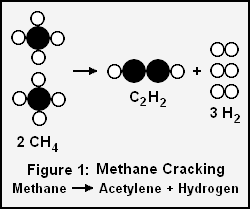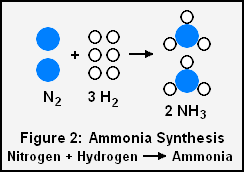User:Milton Beychok/Sandbox
Gas stoichiometry is the quantitative relationship between the reactants and products in chemical reactions that produce gases. Gas stoichiometry applies when all of the gases involved in a chemical reaction (either reactants or products) may be assumed to be ideal, and the temperature and pressure of the gases are all known. Often, but not always, the reference conditions used for gas stoichiometric calculations are taken to be a temperature of 0 °C and an absolute pressure of 1 bar.
History
The term "stoichiometry" predates atomic theory. During the latter part of the eighteenth century, the German chemist Jeremias Benjamin Richter introduced the concept of the chemical mass ratios based on the factual tabulation of quantitative changes that occur during chemical reactions:
In German: Die stöchyometrie (Stöchyometria) ist die Wissenschaft die quantitativen oder Massenverhältnisse zu messen, in welchen die chymischen Elemente gegen einander stehen." [In English: Stoichiometry is the science of measuring the quantitative proportions or mass ratios in which chemical elements stand to one another.]
He named this quantitative study of chemistry "stoichiometry" from two Greek words meaning to measure the magnitude of something that cannot be divided.<ref>Some Stoichiometric Musing]
Calculations
Gas stoichiometry calculations solve for the unknown volume or mass of a gaseous product or reactant. For example, if we wanted to calculate the volume of gaseous NO2 produced from the combustion of 100 g of NH3, by the reaction:
- 4NH3 (g) + 7O2 (g) → 4NO2 (g) + 6H2O (l)
we would carry out the following calculations:
There is a 1:1 molar ratio of NH3 to NO2 in the above balanced combustion reaction, so 5.871 mol of NO2 will be formed. We will employ the ideal gas law to solve for the volume at 0 °C (273.15 K) and 1 atmosphere using the gas law constant of R = 0.08206 L · atm · K−1 · mol−1 :
Gas stoichiometry often involves having to know the molar mass of a gas, given the density of that gas. The ideal gas law can be re-arranged to obtain a relation between the density and the molar mass of an ideal gas:
- and
and thus:
| where: | |
| = absolute gas pressure | |
| = gas volume | |
| = number of moles | |
| = universal ideal gas law constant | |
| = absolute gas temperature | |
| = gas density at and | |
| = mass of gas | |
| = molar mass of gas |
















